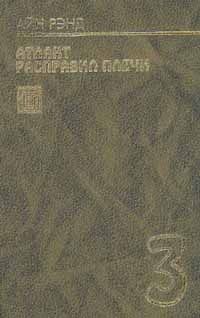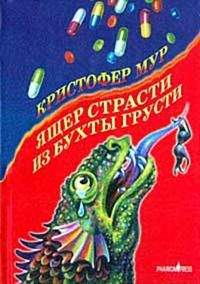Стивен Джуан - Могут ли поцелуи продлить жизнь?
325
S. Juan, ‘Why do some people have three nipples?’, The Register, 13 January 2006.
326
Dr C.R. Goding is from the Marie Curie Research Institute in Surrey, UK.
327
C. Goding, ‘Melanocytes: The new black”, International Journal of Biochemistry and Cell Biology, 2007, vol. 39, no. 2, pp. 275–279.
328
Personal communication, 22 December 2006.
329
S. Juan, ‘Why do we like to scratch a wound when it’s healing?’, The Register, 10 February 2007.
330
Drs Hui-Jun Ma, G. Zhao, F. Shi and Y. Wang are from the Department of Dermatology at the Air Force Hospital of the Chinese People’s Liberation Army in Beijing.
331
H. Ma et al., ‘Eruptive cherry angiomas associated with vitiligo: Provoked by topical nitrogen mustard?’, Journal of Dermatology, 2006, vol. 33, no. 12, p. 877.
332
EnergyAustralia, Shower Timers Help Families Become Energy Effi cient, Energy Australia, Sydney, October 2006.
333
S. Juan, ‘Do we really need a daily shower or bath to stay healthy?’, The Register, 17 February 2007.
334
S. Juan, ‘Great moments in human research’, The Register, 27 January 2007.
335
S. Juan, ‘Great moments in human research”, The Register, 3 February 2007.
336
M. Sims, Adam’s Navel: A Natural and Cultural History of the Human Form, Viking, New York, 2003, pp. 25–27.
337
S. Juan, ‘Why we are not naked even in the womb’, The Register, 7 May 2006.
338
M. Symons, Why Girls Can’t Throw:… and Other Questions You Always Wanted Answered, Harper Paperbacks, New York, 2006, pp. 172–173.
339
S. Juan, ‘Will eating crusts make your hair grow curly?’, The Register, 4 August 2006.
340
S.Juan, ‘Keeping it in the family’, National Post, 20 November 2006, pp. 1–2.
341
H. Sustaita, A Close Look at the Properties of Hair and Scalp, Houston Community College – Northwest, Houston, 2006, pp. 7–9.
342
S. Juan, ‘Why isn’t pubic hair the same colour as hair on your head?’, The Register, 15 September 2006.
343
Dr John O’Connor is head of the School of Physical Science and Mathematics at the University of Newcastle in Australia.
344
Personal communication, 12 August 2006.
345
S. Juan, ‘Can your hair turn white as a result of shock?’, The Register, 29 September 2006.
346
Dr John Mason is a trichologist from Royston near Barnsley in South Yorkshire, UK.
347
J. Mason, ‘The role of the trichologist’, Clinical and Experimental Dermatology, 2002, vol. 27, no. 5, pp. 422–425.
348
Personal communication, 12 November 2006.
349
S.Juan, ‘Why is the human face hairless?’, The Register, 20 January 2007.
350
P. Abrahams, How the Body Works, Amber Books, London, 2007. p. 415.
351
Dr Alan Greene is a clinical professor at the School of Medicine at Stanford University and chief medical officer of ADAM, a medical information organisation.
352
Dr Robert Baran is from the Nail Disease Centre in Cannes, France.
353
J. Brody, ‘Fingernails can reveal much about habits and health’, New York Times, 22 January 1990, pp. B3—B4.
354
Committee on Sports Medicine and Fitness and Council on School Health, American Academy of Pediatrics, Active healthy living: Prevention of childhood obesity through increased physical activity’, Pediatrics, 2006, vol. 171, no. 5, pp. 1834–1842.
355
National Association for Sport and Physical Education, Active Start: A Statement of Physical Activity Guidelines for Children Birth to Five Years, National Association for Sport and Physical Education, Reston, Virginia, 2001.
356
Centre for Community Child Health, Royal Children’s Hospital, Melbourne, ‘Leaping early in life”, Community Paediatric Review, 2006, vol. 15, no. 4, pp. 4–5.
357
H. Klawans, Strange Behaviour: Tales of Evolutionary Neurology, Norton, New York, 2000, pp. 37–38.
358
Drs A.K. Tan and C.B. Tan are from the Department of Neurology at Tan Tock Seng Hospital in Singapore.
359
A. Tan and C. Tan, ‘The syndrome of painful legs and moving toes – a case report’, Singapore Medical Journal, 1996, vol. 37, no. 4, pp. 446–447.
360
M. Sims, Adam’s Navel: A Natural and Cultural History of the Human Form, Penguin Books Australia, Melbourne, 2004, pp. 292–295.
361
Drs S.S. Campbell and P.J. Murphy are from the Laboratory of Human Chronobiology in the Department of Psychiatry at Cornell University Medical College in White Plains, New York.
362
S. Campbell and P. Murphy, ‘Extraocular circadian phototransduction in humans’, Science, 1998, vol. 279 (5349), pp. 333–334.
363
K. Hopkin, ‘Clock setting’, Scientifi c American, April 1998, pp. 20–22.
364
Dr S. Ooki is from the Department of Health Science of Ishikawa Prefectural Nursing University in Kahoku, Japan.
365
S. Ooki, ‘Genetic and environmental influences on fi ngersucking and nail-biting in Japanese twin children’, Twin Research and Human Genetics, 2005, vol. 8, no. 4, pp. 320–327.
366
Drs B. Mangweth, A. Hausmann, C. Danzl, T. Walch, C. Rupp, W. Biebl, J. Hudson and H. Pope are from the Department of Psychiatry at the Innsbruck University Hospital in Austria.
367
B. Mangweth et al., Childhood body-focused behaviours and social behaviours as risk factors of eating disorders’, Psychotherapy and Psychosomatics, 2005, vol. 74, no. 4, pp. 247–253.
368
Drs S. Yassaei, M. Rafi eian and R. Ghafari are from the Shahid Sadoughi University of Medical Sciences and Health Services in Yazd, Iran.
369
S. Yassaei et al., ‘Abnormal oral habits in the children of war veterans’, Journal of Clinical Pediatric Dentistry, 2005, vol. 29, no. 3, pp. 189–192.
370
Drs P.G. Hepper, D. Wells and C. Lynch are from the School of Psychology at Queen’s University in Belfast, Northern Ireland.
371
P. Hepper et al., ‘Prenatal thumb sucking is related to postnatal handedness’, Neuropsychologia, 2005, vol. 43, no. 3, pp. 313–315.
372
S. Juan, ‘Does thumb-sucking run in families?’, The Register, 4 August 2006.
373
S. Juan, ‘Keeping it in the family’, National Post, 20 November 2006, pp. 1–2.
374
C. Frey, The Female Fleet of Foot, American Orthopaedic Foot and Ankle Society, Rosemont, Illinois, 20 July 2006.
375
S. Juan, ‘Why do women have smaller feet?’, Epoch Times, 27 July 2006, p. 8.
376
S. Juan, ‘Why do women have smaller feet?’, The Register, 11 August 2006.
377
S. Juan, ‘Great moments in human research’, The Register, 27 January 2007.
378
S. Juan, ‘Great moments in human research’, The Register, 3 February 2007.
379
B. Hee, ‘Water baby’, New Scientist, 28 June 1997, p. 65.
380
S. Juan, ‘What makes a good swimmer?’, The Register, 25 August 2006.
381
Dr Kevin Beck is a psychologist from Human Kinetics Inc in Champaign, Illinois.
382
K. Beck, Choosing Optimal Stride Length, Human Kinetics Inc, Champaign, Illinois, 28 August 2006.
383
Dr R. McNeill Alexander is from the School of Biology at the University of Leeds in the UK.
384
R. McNeill Alexander, ‘Energetics and optimisation of human walking and running: The 2000 Raymond Pearl memorial lecture”, American Journal of Human Biology, 2002, vol. 14, no. 5, pp. 641–648.
385
A. Ward-Smith, The bioenergetics of optimal performances in middle distance and long-distance track running”, Biomechanics, 1999, vol. 32, no. 5, pp. 461–465.
386
A. Ward-Smith, ‘Energy conversion strategies during 100 m sprinting”, Journal of Sports Science, 2001, vol. 19, no. 9, pp. 701–710.
387
Dr William Sellars is from the Department of Human Sciences at Loughborough University in the UK.
388
W. Sellars, G. Cain, W. Wang and R. Crompton, ‘Stride lengths, speed and energy costs in walking of Australopithecus afraensis: Using evolutionary robotics to predict locomotion of early human ancestors’, Journal of the Royal Society Interface, 2005, vol. 2, pp. 431–441.
389
S. Juan, ‘Is there a speed or stride where running is more effi cient?’, The Register, 22 September 2006.
390
J. Varasdi, Myth Information, 1996, p. 238.
391
Dr A. Bazile, N. Bissada, R. Nair and B. Siegel are from the Department of Periodontics at Case Western Reserve University in Cleveland, Ohio.
392
A. Bazile et al.. Periodontal assessment of patients undergoing angioplasty for treatment of coronary artery disease’, Journal of Periodontology, 2002, vol. 73, no. 6, pp. 631–636.
393
Dr Barbara Taylor is head of periodontics at the Sydney Dental Hospital.
394
B. Taylor, G. Toiler, H. Carey, M. Morel-Kopp, S. Philcox, T. Carter, M. Elliott, A. Kull, C. Ward and K. Schenck, ‘Full mouth tooth extraction lowers systemic infl ammatory and thrombotic markers of cardiovascular risk’, Journal of Dental Research, 2006, vol. 85, no. 1, pp. 74–78.
395
Dr Mark Herzberg is a professor of preventive sciences at the University of Minnesota in Minneapolis.
396
R. Smith, ‘Can fl ossing prevent a heart attack?’, Health, May 1998, p. 136.
397
S. Juan, ‘Can fl ossing your teeth prevent a heart attack?’, The Register, 29 September 2006.
398
Dr Holly Muggleston is from the School of Health and Applied Sciences at Southern Cross University in New South Wales.
399
Personal communication, 10 November 2006.
400
S. Juan, ‘Will sweets really rot your teeth?’, The Register, 24 November 2006.
401
Dr Richard Jonas is from the Children’s National Heart Institute in Washington, DC.
402
J. Varasdi, Myth Information, pp. 123–124.
403
J. Varasdi, Myth Information, pp. 123–124.
404
E. Widmaier, Why Geese Don’t Get Obese (And We Do): How Evolution’s Strategies for Survival Aff ect Our Everyday Lives, W.H. Freeman, San Francisco, 1998, p. 178.
405
Drs A. Pelliccia, B. Maron, A. Spataro, M. Proschan and P. Spirito are from the Department of Medicine at the Comitato Olimpico Nazionale Italiano in Rome.
406
A. Pelliccia et al., ‘The upper limit of physiologic cardiac hypertrophy in highly trained elite athletes’, New England Journal of Medicine, 1991, vol. 324, no. 25, pp. 1812–1813.
407
Dr Alfred Goldberg is a professor of cell biology at Harvard Medical School.
408
J. Shaw, ‘The deadliest sin’, Harvard Magazine, March-April 2004, pp. 36–43, 98–99.
409
C. Petit, ‘What causes arteries to harden’, San Francisco Chronicle, 17 January 1995, p. 2.
410
National Heart Lung and Blood Institute, What is Peripheral Arterial Disease? US Department of Health and Human Services, Washington, DC, 2 January 2007.
411
A. Ciocco, ‘On the interdependence of the length of life of husband and wife’, Human Biology, 1941, vol. 13, no. 4, pp. 505–525.
412



